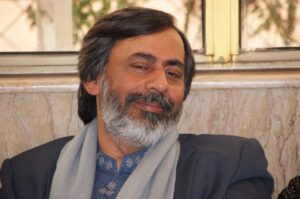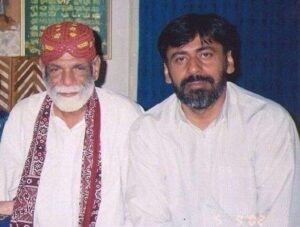Remedy for spinal cord disk problems
Introduction
Spinal cord disc problems, affecting a significant portion of the population, can lead to chronic pain and discomfort, significantly impacting one’s quality of life. This article delves into understanding these problems, their causes, management strategies, and introduces “The Ultimate Remedy,” an innovative form of audio therapy designed to complement traditional treatments.
Introduction to Spinal Cord Disc Problems
Spinal disc issues involve the discs between the vertebrae in the spinal cord. These discs act as shock absorbers, allowing flexibility and movement. When problems arise, it can lead to pain, numbness, or weakness, often affecting daily activities.
Understanding Spinal Cord Disc Problems
Common spinal cord disc problems include herniated discs, degenerative disc disease, and spinal stenosis. Symptoms vary depending on the affected disc’s location but often include:
- Pain in the neck or back.
- Radiating pain in the arms or legs.
- Numbness, tingling, or weakness in limbs.
- Difficulty in movement and flexibility.
Causes of Spinal Cord Disc Problems
Several factors contribute to the development of spinal cord disc issues:
Aging: Discs naturally degenerate over time, losing their flexibility and ability to absorb shocks.
Injury: Accidents or trauma can cause discs to herniate or rupture.
Lifestyle Choices: Poor posture, lack of regular exercise, and unhealthy body weight can increase the risk.
Genetic Factors: Some individuals are genetically predisposed to disc problems.
Management of Spinal Cord Disc Problems
Effective management typically involves a multi-pronged approach:
Physical Therapy: Helps strengthen the muscles around the spine and improve flexibility.
Medications: Pain relievers and anti-inflammatory drugs can alleviate pain and discomfort.
Lifestyle Modifications: Regular exercise, maintaining a healthy weight, and practicing good posture can prevent further problems.
Surgical Interventions: In severe cases, procedures like discectomy or spinal fusion may be necessary.
The “Ultimate Remedy” An Alternative Approach
Alongside traditional treatments, “The Ultimate Remedy” offers a unique approach. This audio therapy uses sound frequencies and intention to promote healing and alleviate discomfort associated with spinal cord disc problems.
How to Use The Ultimate Remedy
Download the Audio: Visit our website and download The Ultimate Remedy audio. Direct links are provided.
Listen as Instructed: Follow the guidelines for listening to ensure optimal benefits.
Support and Testimonials: For any inquiries or further information, contact help@mastmasthealers.com. Testimonials can provide insights into the therapy’s effectiveness.
Benefits of The Ultimate Remedy
Therapeutic Sound Frequencies: The audio employs frequencies known for their soothing and healing properties.
Focused Intention: Combining sound with a focused intention can enhance the therapy’s effectiveness.
Conclusion
Spinal cord disc problems, while challenging, can be managed effectively with a combination of medical interventions, lifestyle changes, and supportive therapies like The Ultimate Remedy. This comprehensive approach can help individuals achieve pain relief and improve their overall quality of life.
Happy Patients
Years since day one
%
Satisfaction
Testimonial
How to Listen to the Ultimate Remedy:
Download the Ultimate Remedy audio from our website or app. It’s free and accessible to all.
- Choose a quiet, comfortable space where you won’t be disturbed.
- Close your eyes and visualize yourself in the presence of your higher power or the essence of the universe.
- Listen to the audio with great concentration and closed eyes.
- After the audio is finished, open your eyes and take half a glass of water.
- Close your eyes again and say “your name” or a word that represents your belief (such as “God”, “Universe”, or “Love”) three times in your heart.
- Drink the water with closed eyes in three sips.
- For optimal results, it’s recommended to listen to the Ultimate Remedy three times a day (morning, evening, and before sleeping) for seven consecutive days.
About the Creator – Syed Safdar Hussain Bukhari
Introduction and Early Life
Syed Safdar Hussain Bukhari, also known as Kakian Wali Sarkar, was a unique example of kindness, devotion, and tenacity. Born on May 6th, 1940, he dedicated his life to serving humanity and providing relief to those suffering from various ailments.

Social Work and Spiritual Journey
Between 1960-1980, he engaged in social work by undertaking road repairs, establishing schools, and arranging medical supplies in Lilla Town. In 1990, he left his ancestral home and family wealth to move to Lahore, where he comforted the depressed and saddened through mystic dance and music.
The Ultimate Remedy
In 1998, Baba Bukhari’s research led to the discovery of “The Ultimate Remedy,” a blessed audio that he believed could cure physical, psychological, spiritual, and supernatural problems. The remedy involved listening to the audio three times a day for seven consecutive days, followed by a specific water ritual. This method claimed to cure various ailments, including coronavirus, AIDS, cancer, drug addiction, worldly problems, and psychological issues.
Legacy and Death
Baba Bukhari’s research and unconditional love left a lasting impact on humanity, providing positive thinking, peace of mind, health, fearless life, and an example of love and compassion. He passed away on February 8th, 2005, leaving behind a legacy of healing through “The Ultimate Remedy.”

His spiritual successor is Syed Baba Jaan
According to Baba Bukhari (RA), his spiritual successor is Mr. Shakir Uzair, also known as Syed Baba Jaan . As the chosen heir to Baba Bukhari’s spiritual legacy, Syed Baba Jaan carries forward the teachings and practices that have been passed down through generations. Dedicated to serving humanity and promoting healing, Mr. Shakir Uzair continues to spread the message of love, compassion, and the transformative power of the Ultimate Remedy to help countless individuals in their journey towards holistic wellness and personal growth.

